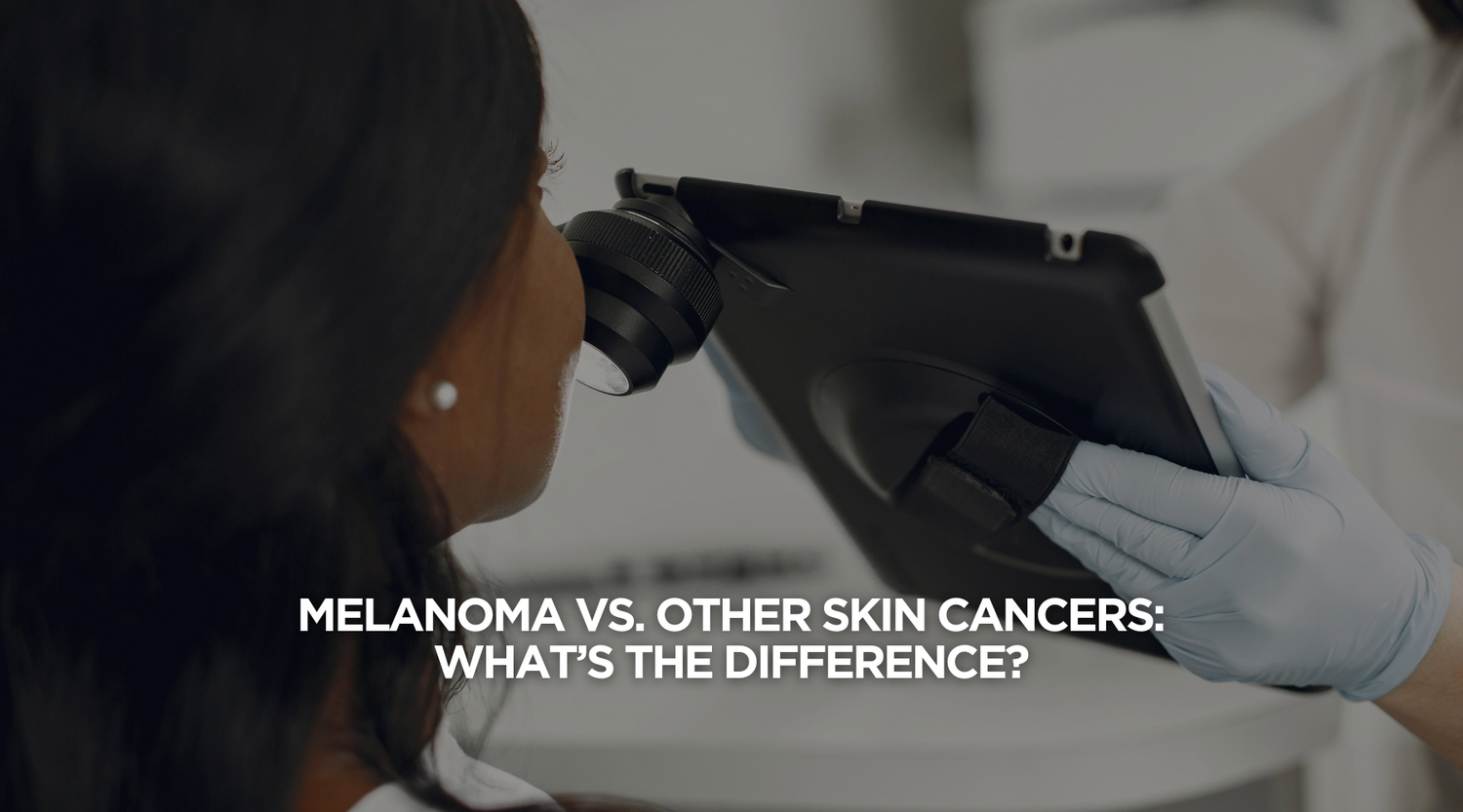During Melanoma Awareness Month, it's important to understand not only what melanoma is, but how it compares to other types of skin cancers. While all forms of skin cancer stem from UV exposure and can be serious if left untreated, melanoma stands apart due to its aggressive nature and potential to spread rapidly.
Understanding the key differences between melanoma, basal cell carcinoma, and squamous cell carcinoma can help you identify early warning signs, take proactive steps toward prevention, and know when to seek medical attention.
Types of Skin Cancer
1. Melanoma
Melanoma develops in melanocytes, the pigment-producing cells in the skin. It's the most dangerous form of skin cancer because it can spread to other parts of the body quickly if not caught early. It often begins as a new mole or a change in an existing mole.
Warning Signs:
-
Irregular shape, colour or border (ABCDE rule)
-
Rapid changes in size or colour
-
Itching, bleeding or ulceration
Melanoma is the most common cancer in Australians aged 20-39, and early detection is crucial, with a five-year survival rate of over 90% if caught early.
2. Basal Cell Carcinoma (BCC)
BCC is the most common type of skin cancer, typically caused by long-term sun exposure. It develops in the basal cells at the bottom of the epidermis and rarely spreads, but it can cause localised damage if untreated.
Warning Signs:
-
Pearly or waxy bumps
-
Flat, flesh-coloured or brown scar-like lesions
-
Bleeding or oozing sores that don't heal
3. Squamous Cell Carcinoma (SCC)
SCC forms in the squamous cells near the surface of the skin and is the second most common form of skin cancer. It can grow quickly and has the potential to spread if ignored.
Warning Signs:
-
Scaly red patches
-
Open sores that crust or bleed
-
Raised growths with a central depression
Prevention Across All Types
While each type of skin cancer differs in severity and growth rate, the preventive measures are largely the same:
-
Wear UPF50+ clothing like SParms sleeves, shoulder wraps, and gloves to physically block out 98% of UV rays.
-
Apply broad-spectrum SPF50+ sunscreen, especially on exposed areas like your face, ears, and neck.
-
Avoid sun exposure during peak UV hours (10am–4pm).
-
Wear sunglasses and a wide-brim hat for additional protection.
-
Check your skin monthly and visit a dermatologist at least once a year for a full skin check.
What Dermatologists Recommend
Leading dermatologists consistently emphasise the role of UPF clothing in sun protection, noting that clothing is more reliable than sunscreen alone because it doesn't wear off, sweat away, or require reapplication.
Final Thoughts
Melanoma may be the most aggressive form of skin cancer, but all skin cancers carry risk and should be taken seriously. Early detection and proactive sun protection are key to lowering your risk.
This Melanoma Awareness Month, take the time to know your skin, protect it with SParms UPF50+ gear, and schedule a professional skin check. It could save your life.
Stay sun smart. Stay protected.
